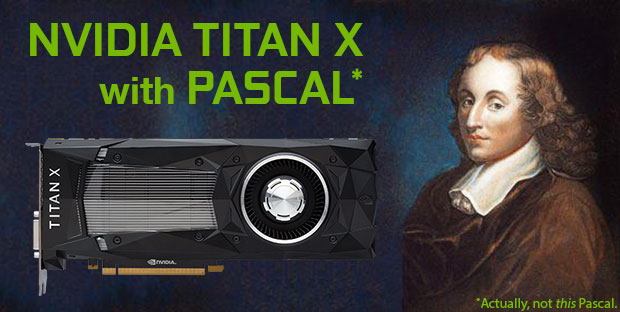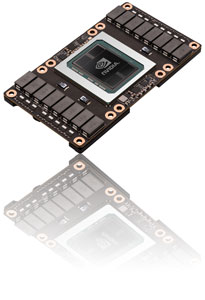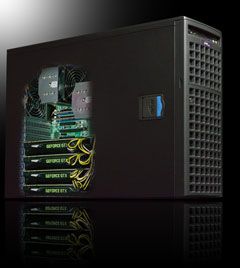Is the NVIDIA Titan X up to the Challenges of Deep Learning?

NVIDIA has recently introduced the new TITAN X™, the biggest and most advanced GPU ever built. Blaise Pascal said, “Imagination decides everything.” This certainly applies to the hardware engineering team at NVIDIA. Not content with the already “irresponsible amount of performance” of their GTX 1080, they imagined breaking the 10 teraflops barrier for computing on a single chip. The decidedly impressive result is the new NVIDIA TITAN X with Pascal™.
NVIDIA TITAN X with Pascal
 When tackling deep learning challenges, nothing short of ultimate performance will get the job done. The latest Titan X is the first GPU to consider. The Titan X with Pascal is built atop NVIDIA’s new upsized GP102 architecture. Highlights of the GP102 include:
When tackling deep learning challenges, nothing short of ultimate performance will get the job done. The latest Titan X is the first GPU to consider. The Titan X with Pascal is built atop NVIDIA’s new upsized GP102 architecture. Highlights of the GP102 include:
- 30 Streaming Multiprocessors
- 11 TFLOPS FP32
- 44 TFLOPS INT8
- 3584 CUDA Cores at 1.53GHz
- 12 GB GDDR5x memory (480 GB/s)
- 12,000,000,000 Transistors
- NVLink High-Speed SLI Interconnect
The Velocity D58PSC – a Desktop Supercomputer
 One might expect that computational learning projects would require racks and racks of dense compute nodes with lightning fast interconnects. However, technologies like the new NVIDIA Titan X bring High Performance Computing (HPC) right to your desktop. Pogo provides many researchers with their own Personal Supercomputers, such as the Pogo Linux Velocity D58PSC Workstation.
One might expect that computational learning projects would require racks and racks of dense compute nodes with lightning fast interconnects. However, technologies like the new NVIDIA Titan X bring High Performance Computing (HPC) right to your desktop. Pogo provides many researchers with their own Personal Supercomputers, such as the Pogo Linux Velocity D58PSC Workstation.
We recently built one of these high end workstations for an uncompromising client researching machine learning. Pushing the boundaries in a deep learning project, this researcher is using TensorFlow, one of the products from the Google Brain Team within the Google Machine Intelligence organization. One aspect of TensorFlow is that it works best with GPU computing. However, even with GPUs, performance increases are sublinear. As a result, achieving top performance requires top-of-the-line GPUs. This is the ideal use case for the new Titan X.
Our client required no less than four Titan X cards installed in their new system. Fortunately, the Velocity D58PSC provided the ideal platform for this application.
With Dual Intel Xeon E5-2600 v4 series processors and up to 1TB of DDR4 memory, the D58PSC will extract maximum performance from these new GPUs. Topping off the configuration with up to 8x SAS or SATA SSDs will ensure there will be no I/O bottlenecks throughout the system. In cutting edge research, having the right equipment is key. By combining the raw CPU and I/O power of the D58PSC with Titan X GPUs, this researcher has a recipe for success.
To find out more about GPU Computing and what it can do for your projects, Contact the Pogo Sales Engineering team team to learn more about these extraordinary technologies.

To learn about how Pogo can help you tackle the technological challenges your organization is facing, please call us at 888-828-POGO, or email .
